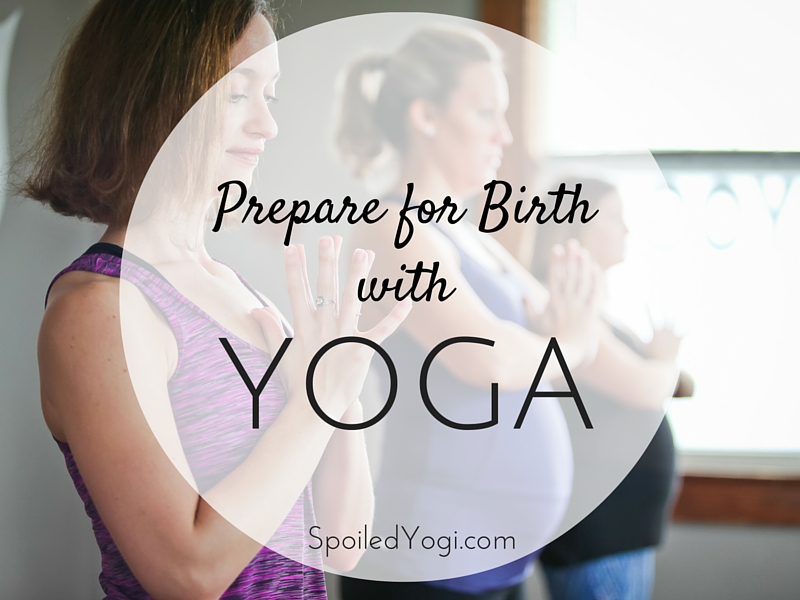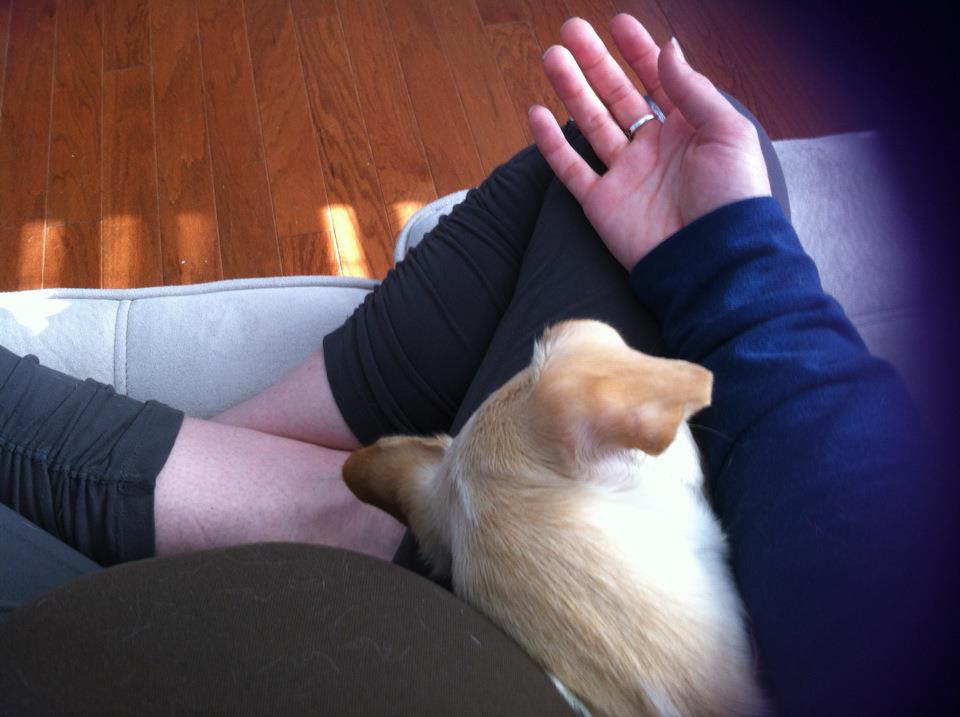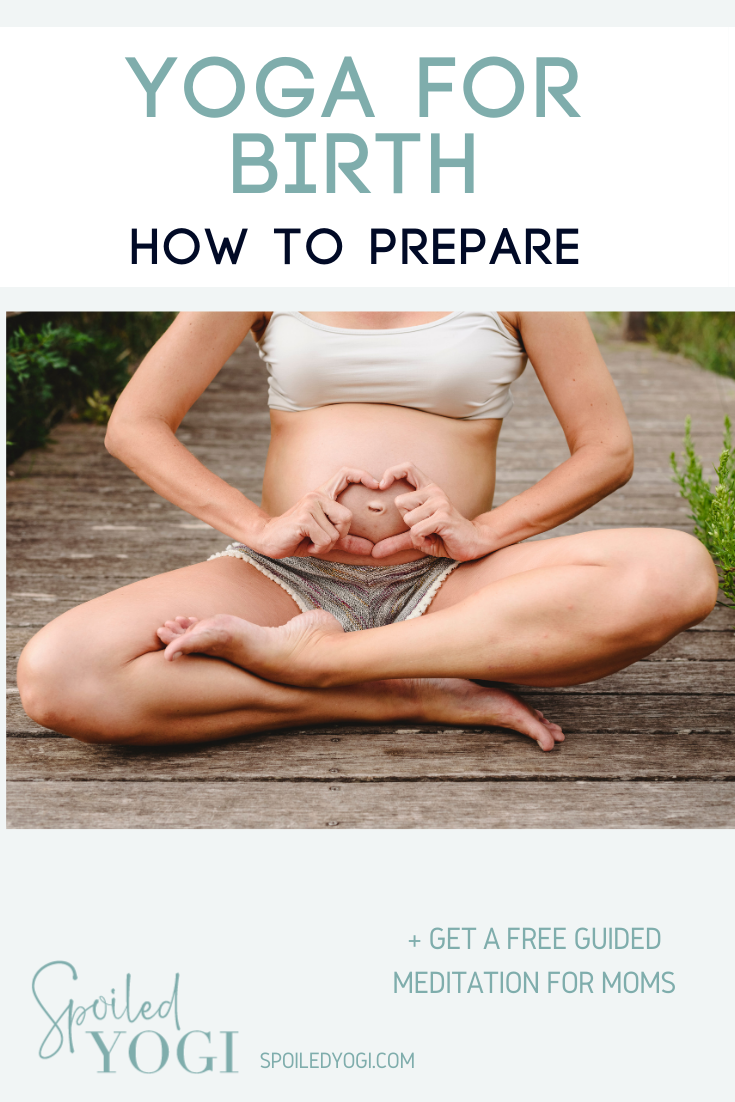
Now that I’m more than halfway through my pregnancy, I’m starting to think about how I want my birth to be this time around. I’ve started meeting birth doulas (because I know I want that support this time!), reading up on new developments in birth (delayed cord cutting wasn’t really a thing last time I did this), and I’ve been doing lots of research into birthing classes. It’s been challenging for me to find good descriptions that explain well the differences between various birthing methods and systems.
The few places I’ve found that do a good comparison all seem to make me think I’m already pretty well prepared for my birth, not just because I’ve already done it once before so I know what to expect, but because of my longtime yoga practice. Nearly every article I’ve come across says that prenatal yoga classes are an excellent way to prepare for birth. I have to agree—and it’s not just because I’m a prenatal yoga teacher. Many of my students have validated that, sharing that what they learned in prenatal yoga was what helped them through their births.
Bringing a life into the world is an amazingly beautiful thing. But it can also come with a lot of stress and anxieties. It’s no wonder that yoga, with its emphasis on stretching, mindfulness, deep breathing, stress management, and the mind-body connection, is incredibly helpful for mamas as they go through this life-altering event.
Have you been wondering if you should add a weekly prenatal yoga class to your list of to-dos before your due date? Here are just a few of the ways yoga for birth is a great preparation.
Yoga for Birth: 8 Ways Yoga Prepares Your Body + Mind for Birth
1. Learn to breathe to soothe yourself and manage pain.
I’ve had many moms go through my prenatal yoga program tell me the exact same thing: “During my birth, I couldn’t remember a thing I learned from that expensive birthing class I took. But I DID remember my yoga breathing, and that’s what got me through.” That’s because when you practice breathing deeply and slowly regularly, something you should definitely do when you’re working on yoga for birth, it becomes something you can turn to naturally without thinking.
2. Get comfortable with being uncomfortable.
If you practice yoga much, you’ll find yourself in lots of uncomfortable positions. Some are just slightly annoying, while others are pretty intense and make you want to move into another position as quickly as possible. Giving birth is a lot like a really intense, uncomfortable yoga pose. If you have a good teacher, she’ll help you practice how to hang out in those uncomfortable moments, understand that they’re temporary, and show you that you can withstand more discomfort than you ever thought. Even if you’re not planning a drug-free birth, this practice is extremely helpful in coping with the normal discomforts of pregnancy.
3. Move baby into an optimal position for birth.
Positions like Downward-Facing Dog and Cat-Cow are great for helping to move baby into a head-down position so his entry into the world can be smoother, with less interventions along the way.
4. Move baby into the birth canal and begin the birthing process.
Now, I’ve blogged before about my experiences using yoga to induce labor with my sweet girl. It just didn’t work the way I wanted it to! (See 5 Yoga Poses That to Induce Labor That Don’t Work.) But once you have baby in that head-down position working on poses that open the hips (like squats and half-squats) can help move the head further down into the pelvis. This is important because it’s the head pressing down that helps to soften and thin the cervix and prepare the mother’s body for labor—even if it doesn’t seem to make labor happen immediately (at least it didn’t work on my timeline!).

Here’s what my daily meditation looked like when I was pregnant with my first—messy, distracted, and totally worth the effort!
5. Learn to rest more efficiently.
One of my favorite ways to sequence prenatal yoga classes is to alternate active poses with resting poses like Child’s Pose throughout the class. Not only does it make a point about how we should be balancing activity and rest in our lives for optimal health, it is also good practice for the pattern of contraction/rest mamas experience when they give birth. If you practice resting fully between the contractions, you’ll be able to withstand the discomforts of birth better, but your body will also be more efficient at softening and opening—so you just might get to see that sweet baby face a little quicker!
6. Learn to go of what you can’t control.
You can write out birth plans until the cows come home. But no matter how detailed you are in your plan, there’s only so much you can control about how your baby comes into this world. I was hell-bent on a natural birth when I had my daughter. That plan changed when I started active labor at 11pm at night, threw up every few minutes, only had like 3 seconds between contractions (or so it seemed), and I was just too tired to keep going! I could never have planned for all of that.
I got an epidural. Slept for a few hours. I had my sweet girl in my arms by 7am. Which, by the way, meant there were like 20 people in the room watching me push because it was a shift change—FANtastic! But, you know what? In the end, I had a happy, healthy baby and that’s all that mattered to me.
Looking back on it, I know it was my yoga training that allowed me to let go of my plan and make good decisions for myself. It’s OK to skip the Vinyasas and take a Child’s Pose instead. Holding onto a plan that just isn’t happening is as helpful as clenching your teeth in a Warrior Pose. (And, you know, that tension in your body while you’re giving birth doesn’t exactly make it easy for the baby to move through the birth canal).
Some days you feel like the “fullest expression” of the pose. Other days you just need to lay in a puddle of your own sweat and be with the feelings that come up one deep, mindful breath at a time. It’s all yoga. And it’s all good.
7. Learn to trust your body and the natural birthing process.
One of the most empowering things about teaching prenatal yoga has been studying a woman’s body and beginning to see, so clearly, that so much about our bodies was designed specifically for this event. Even the shapes of our bones to the system of hormones that allows us to soften to make room for the baby to make a graceful exit is built for building and birthing babies.
This gives me an incredible amount of respect and love for my body (something I’ve been practicing in my yoga practice for more than a decade!), but it also makes me trust that even when I don’t understand everything that’s going on, my body just naturally knows what to do. The more I get to know my body through yoga, the more I trust it. And the more I trust it, the more I can stop worrying and trying to control—exactly what you want during birth.
8. Find a support system.
Yoga isn’t the only place where you can find other mamas in the same phase of life, but it is a great place to find mama friends who are striving for health and harmony. I love watching mamas in my prenatal yoga classes build friendships that continue well past the newborn days. I see how helpful it is for them to have someone to compare notes with. Not to mention, it can be so comforting to get to know someone a few weeks ahead of you in their pregnancies so you can actually SEE what to expect (or, in the case of birth, at least you can hear a debriefing). Just knowing you aren’t alone is a great comfort, and sometimes that can make all the difference.
Read How (and Why) to Make Amazing Mom Friends
See also 8 Yoga Poses to Try with Your Baby or Toddler
I’d love to hear from all the mamas out there who did yoga leading up to their births. Did it help you? Please share your experiences in the comments section below!
Get the FREE Training 6 Steps to Conquer Your Fears and Give Birth YOUR Way now!



Hi can u suggest me some yoga poses to help my condition?I have a low lying placenta and my doc advised bedrest.i am in my 27th week of pregnancy.
Hi Harita,
I’m so sorry to hear that. I know that has to be really tough. Unfortunately, I don’t know of any yoga postures that would help shift a placenta. It’s best to listen to your doctor on this one. Of course, yoga breathing, meditations, visualizations, can absolutely help you mentally throughout your time on bed rest. I think you’ll find a few helpful ones here on the blog that might help with anxiety, etc. Thanks so much for reading and commenting. I hope everything turns out the way you want it to. Best of luck!
Erica